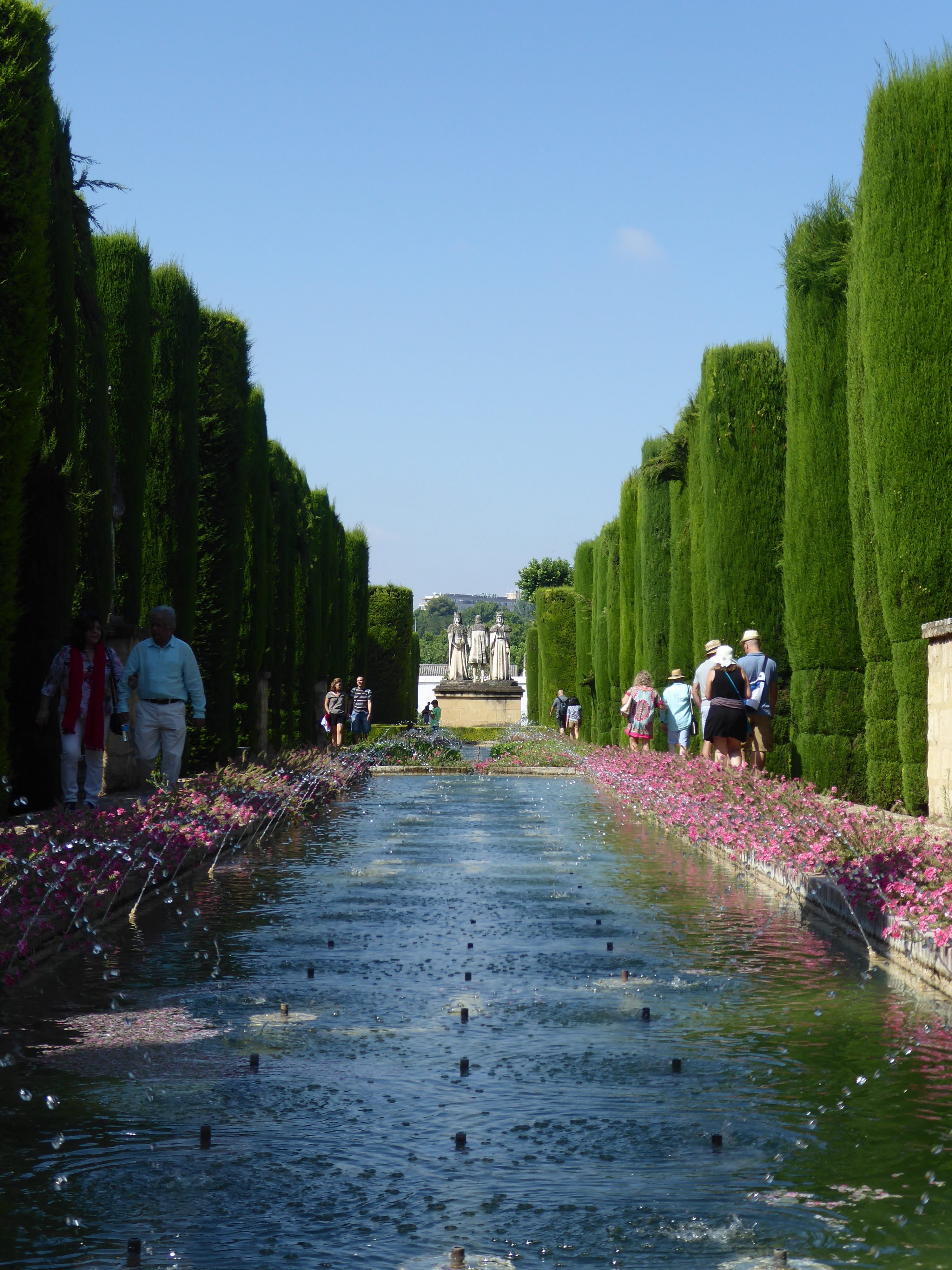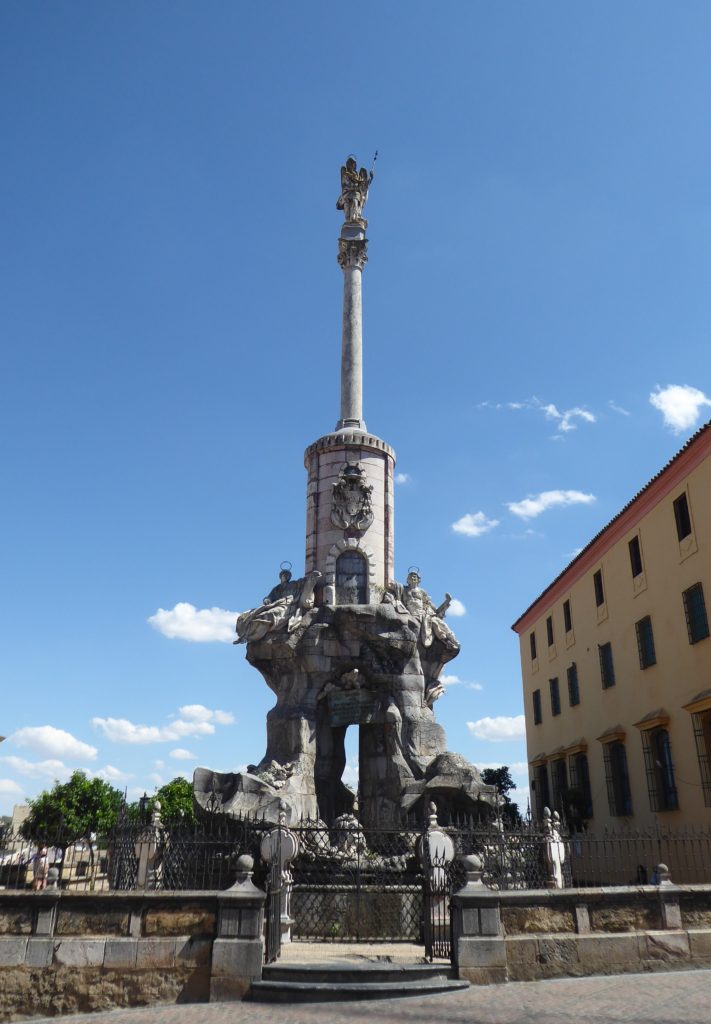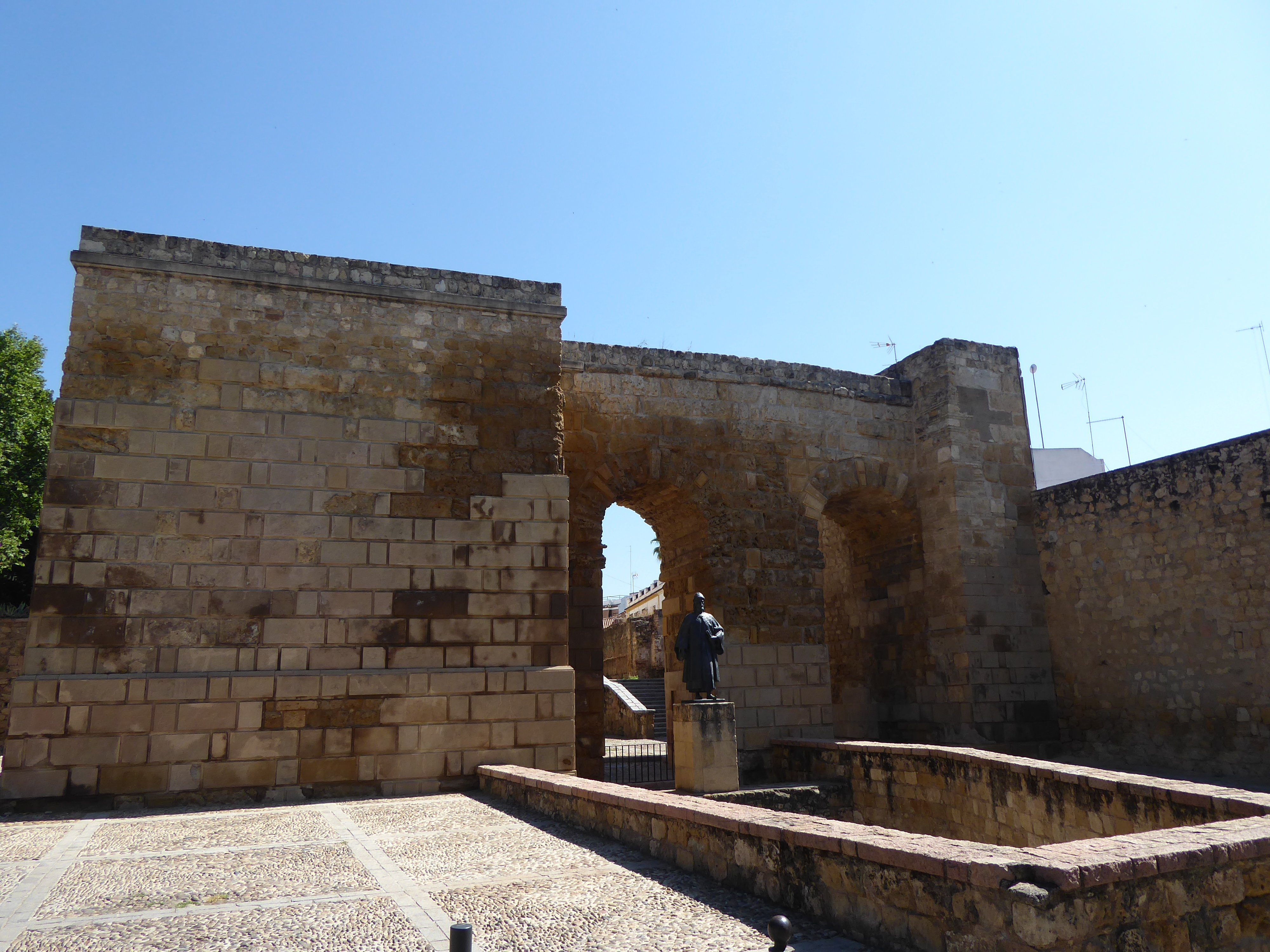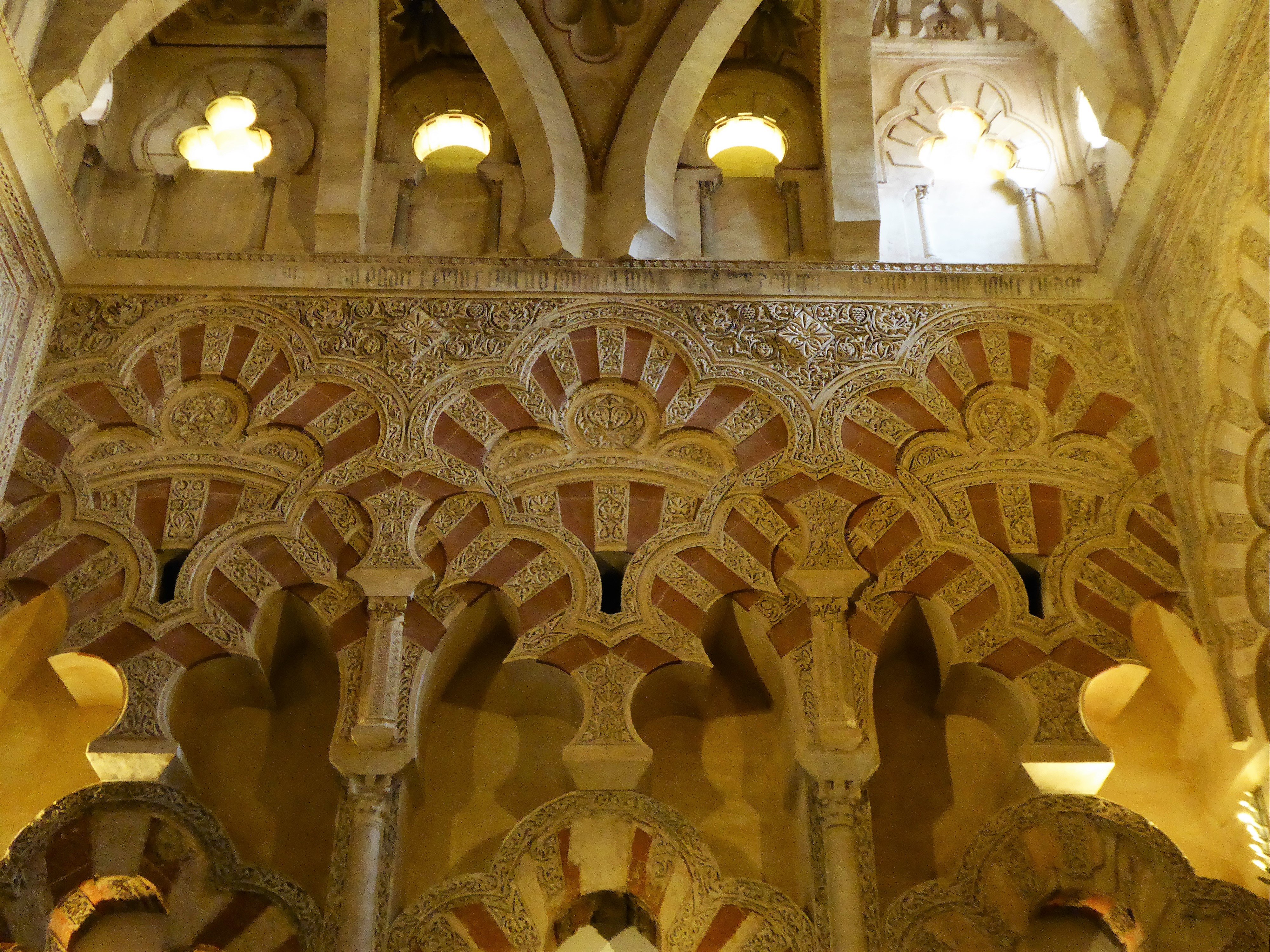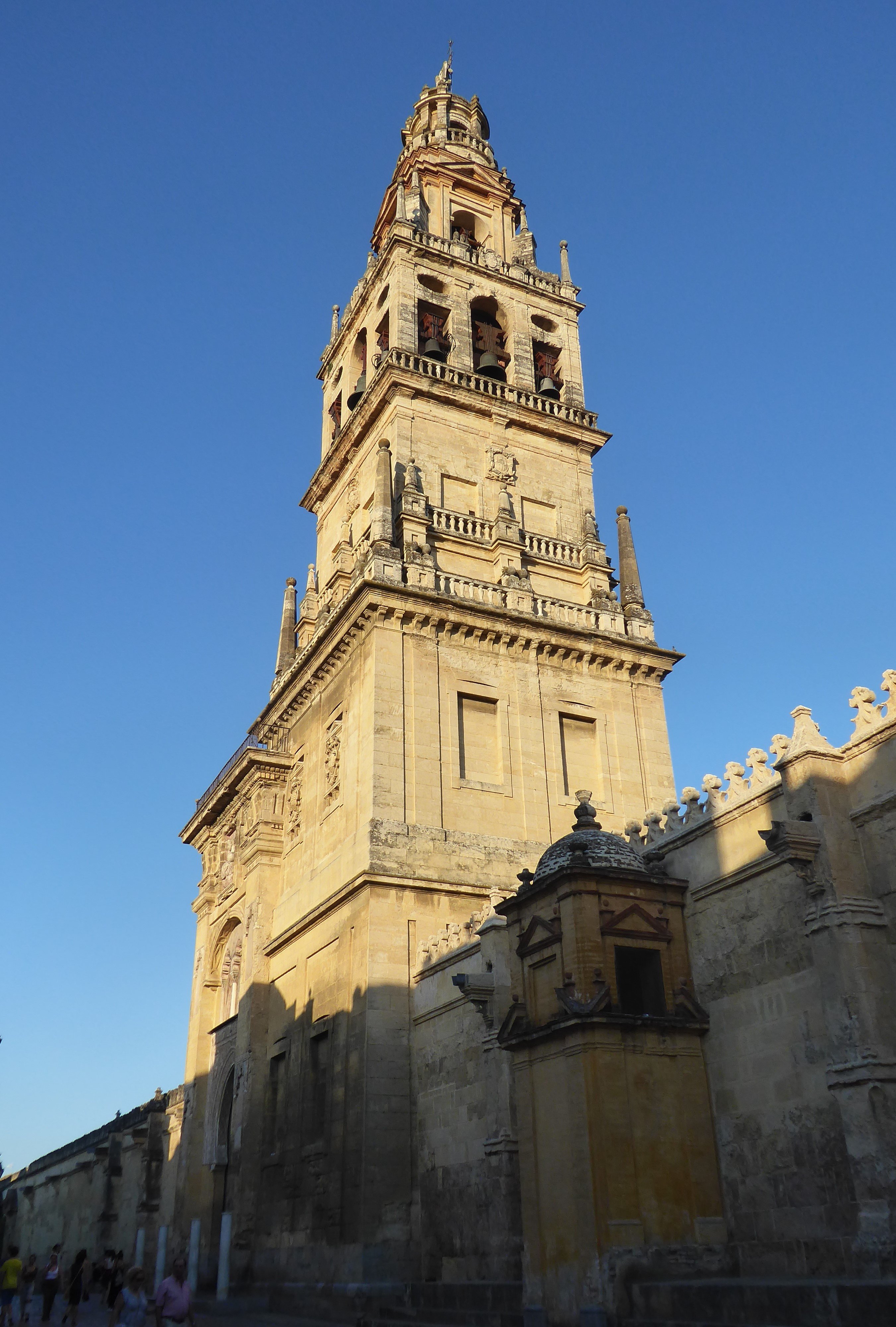
Cordoba
I arrived in Cordoba and thought I may be in the wrong place; a big modern train station and outside was a busy urbanised city town! The historical Cordoba is only 1.7km away so a short walk, even in 35 degrees heat the walk is enjoyable and you get to see the new town while it tapers into the old. My hotel, Los Patios is in the heart of the old city, over the road from the Mosque–Cathedral of Córdoba/Mezquita-Catedral de Córdoba/Great Mosque of Córdoba/Mezquita de Córdoba Mezquita/Cathedral of Our Lady of the Assumption. For three nights it cost €61, without breakfast! When I booked I wondered if the pictures were accurate because at that price you may be able to get a bed in a 9 room dorm hostel! To my relief the place is excellent! My only negative comment is that the restaurant is a little steep on price for what you get, but compared to other restaurants nearby it was on-par or cheaper and the internet is a little slow too, but now I’m being pedantic. I’d highly recommend this place even if it were purely on price and location.
If you’re visiting Cordoba you only need one day to see just about everything, two days if you want to go to Medina Azahara and three days at tops to explore everything in-depth. After the first day I extended my stay an additional day just to chillout – Cordoba average temperature in Summer is mid-30s!
Tip from the hotel
The cathedral is free from 8:30 – 9:30 afterwards it cost €10. The free entry doesn’t include any tour and some parts are closed but the vast majority is open so not worth the €10.
Roman Bridge
The major attractions in Cordoba are within a 100 meter radius from the cathedral, the Roman bridge of Cordoba was first constructed over 2000 years ago, most of the current bridge is from the Moorish times so only about 1300 years old! The tower at the end of the bridge Calahorra Tower/Torre de la Calahorra) is from the 12th century is a fortified gate and was part of the city’s defences. Cordoba, unbeknownst to me before my visit used to be the capital of the Islamic Emirate and then Caliphate of Córdoba, including most of the Iberian Peninsula. Prior to that during the Roman times of Julius Caesar, Córdoba was the capital of the Roman province of Hispania Ulterior/Baetica. Great Roman philosophers such as Lucius Annaeus Seneca the Younger, orators such as Seneca the Elder, and poets such as Lucan came from Roman Cordoba. And, after all of that it also played a prominent role in the Spanish Inquisition! In short, the place has serious historical credentials.


The streets around the historical city are a jumble of wavy pedestrian cobbled roads with white washed (in most cases) walls and pot plants hanging from windows or balustrades in the residential areas. The centre is very touristy with most shops selling curios and copious amounts of vibrantly colour pottery – some over the top to my liking.

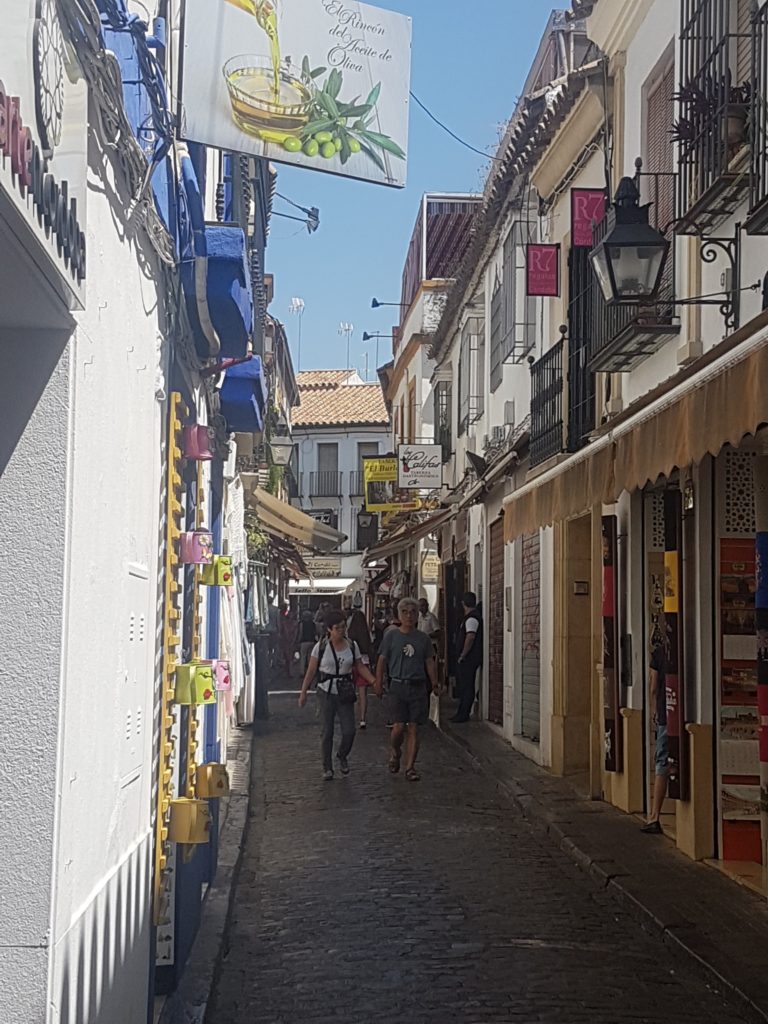
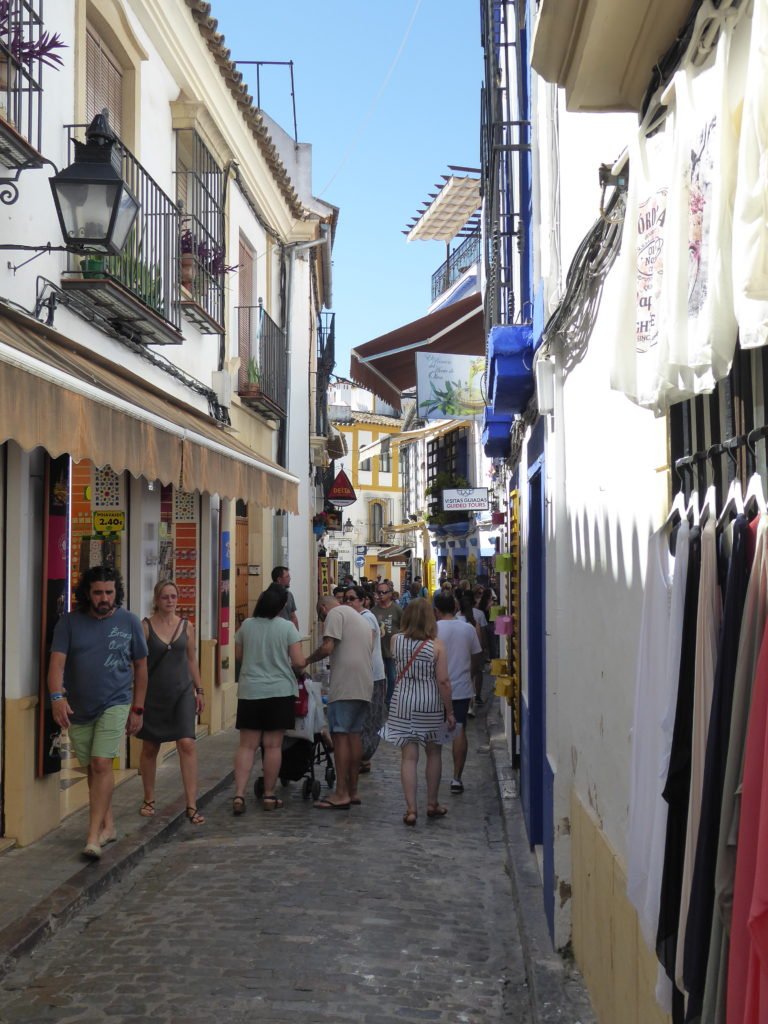
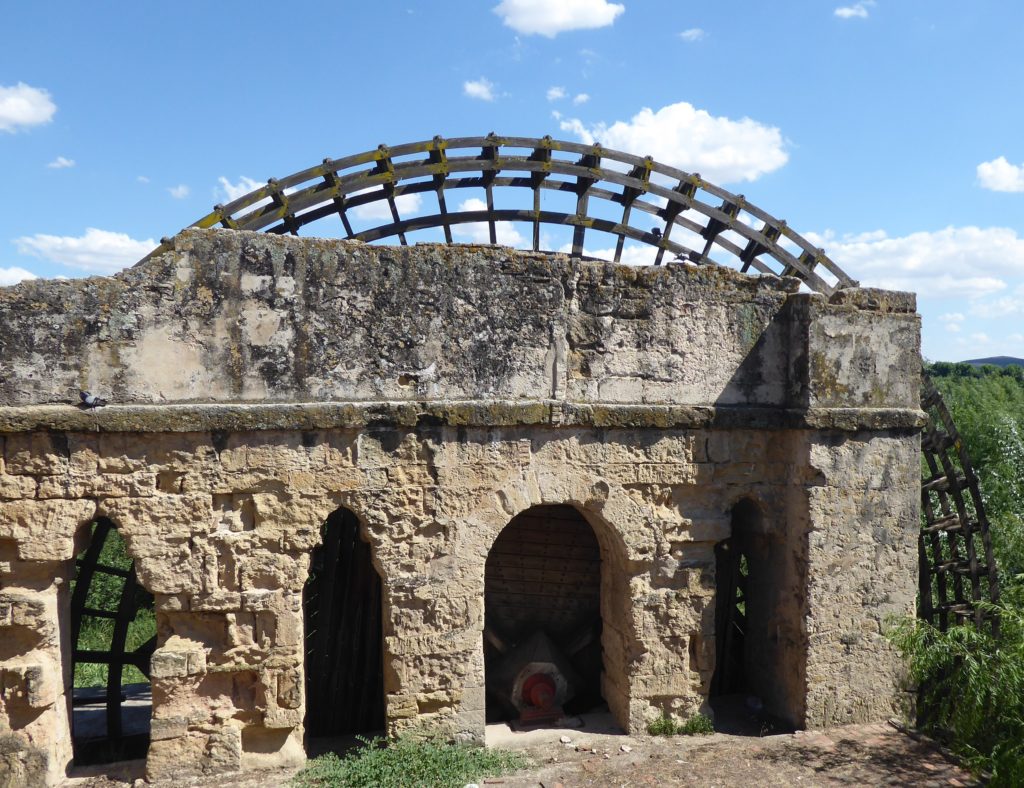
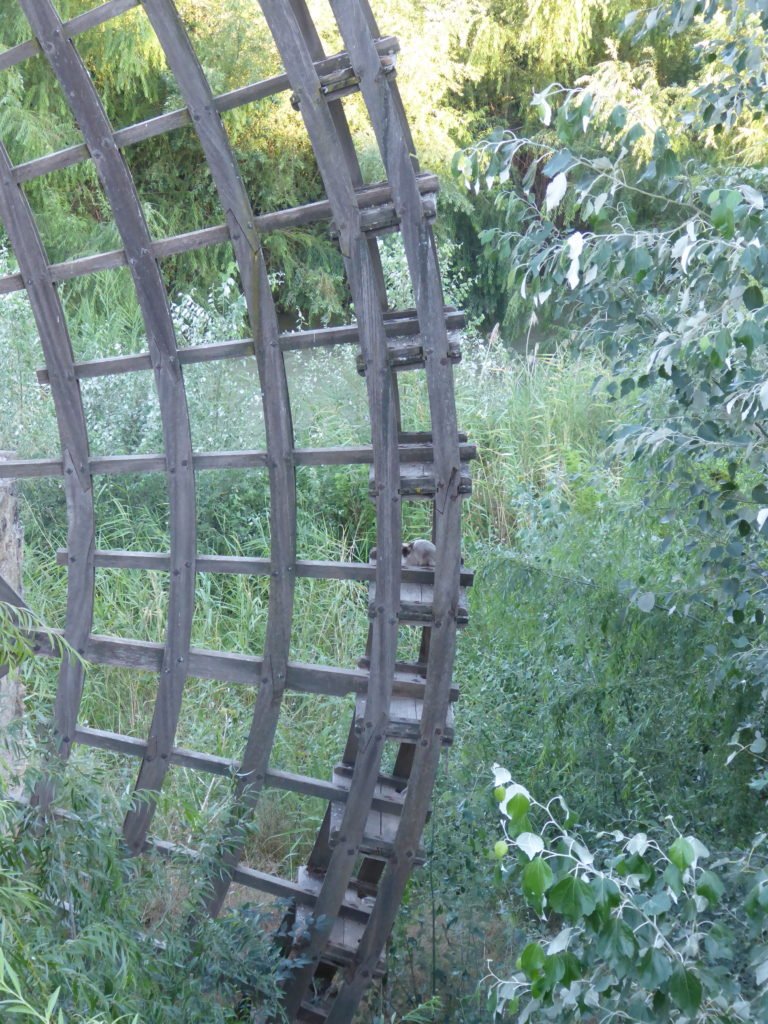
Right next to the bridge is a lonely deteriorating water wheel, named after Abd al-Rahman II who altered it to carry water to his palace. Unfortunately, it was so overgrown you can’t really see it that well and considering this water wheel has been on Cordoba’s city coat of arms since 14th century I was a bit perplexed as it is not occupied by stray cats! Yes, that’s a cat on wheel.
Mosque of Cordoba / Cordoba Cathedral
Next morning, 8:45 the Cathedral/Mosque beckoned, entering in through the gate of the bell tower which occupies the horizon from almost anywhere in the historic centre. Monstrously high walls surround the Cathedral/Mosque, absolutely huge and decorated on all sides, some weathered better than other but still impressive. Behind the entrance you are welcomed into a courtyard of trees, palms and conifers filling the space with bright shades of green against a backdrop of the cool yellow tinged stone used to build the walls and cathedral/mosque.



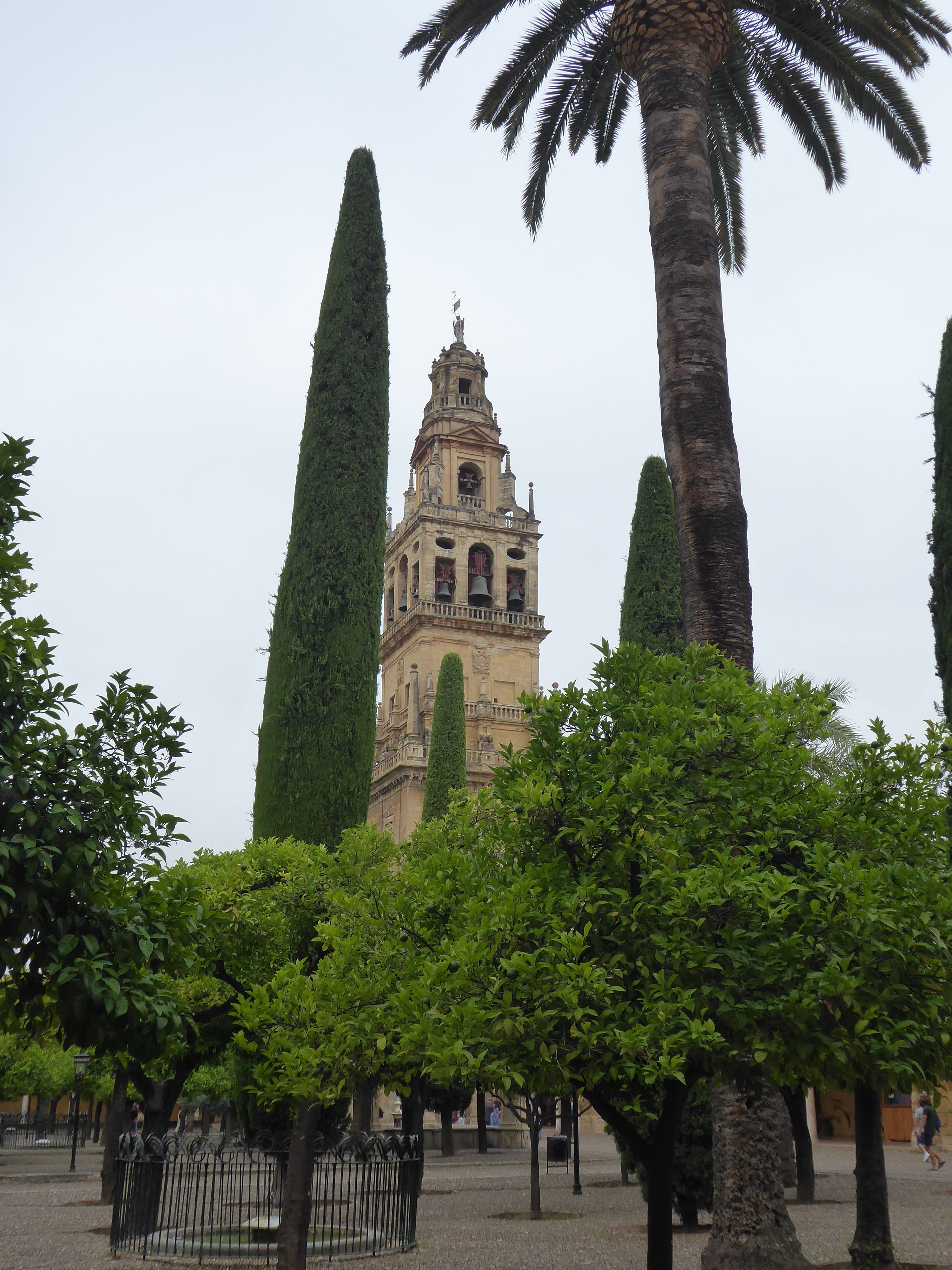
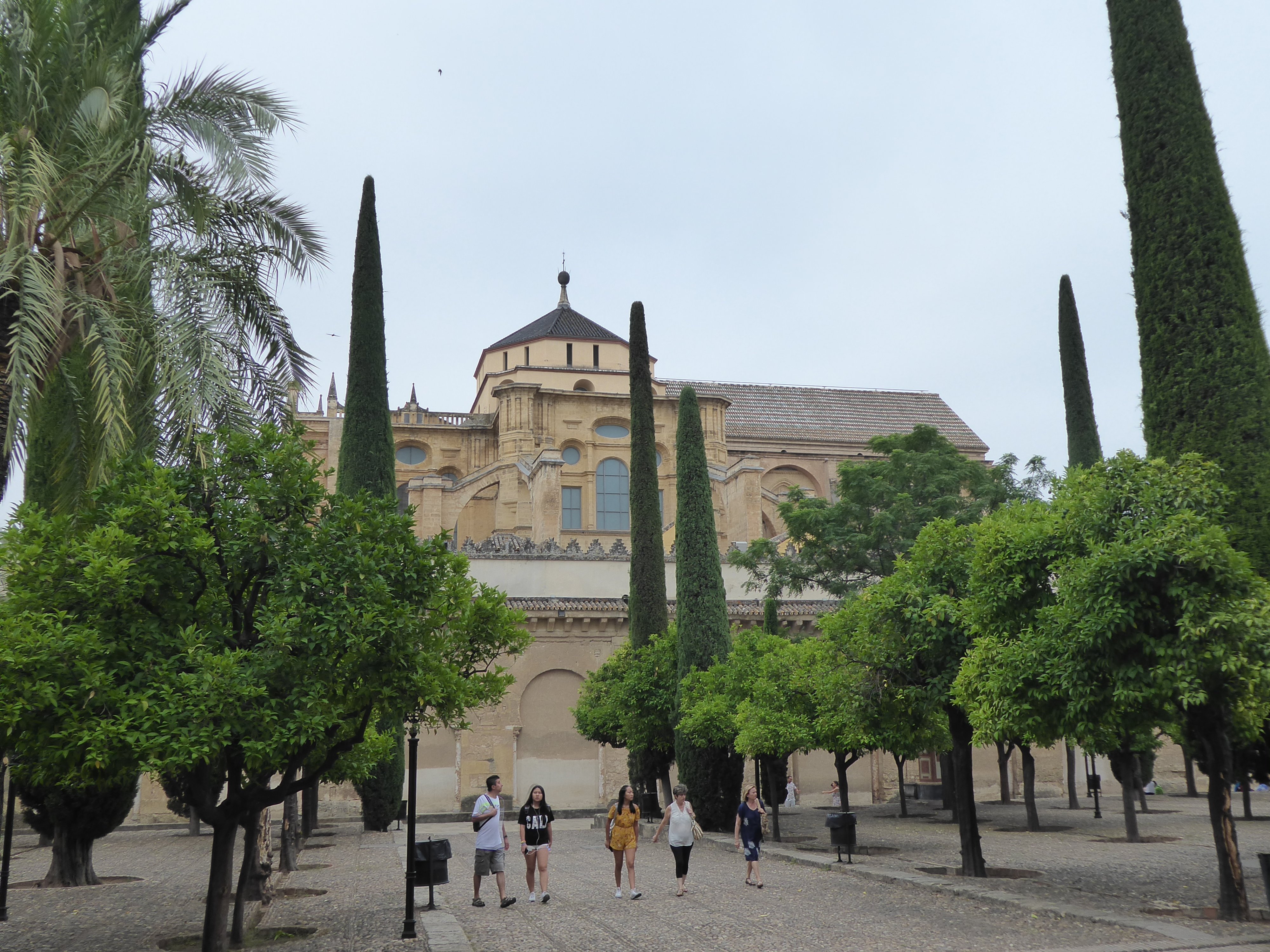
Mosque of Cordoba
If you ever want to see how history, religion and architecture from various periods and religions can be amalgamated to serve the purpose of “the times” then I cannot think of a better example than this building. The inside is clearly Islamic, the arches of white and peachy terracotta fill the area with hypnotic repetition in every direction but the walls are decorated with Christian shrines. The building is quite dark everywhere but comforting, the centre looking like it is lit with floodlights in comparison to the periphery shining up at the white walls stretching up the immense vaulted ceiling. The foundation of the building is Islamic and decorations Christian.
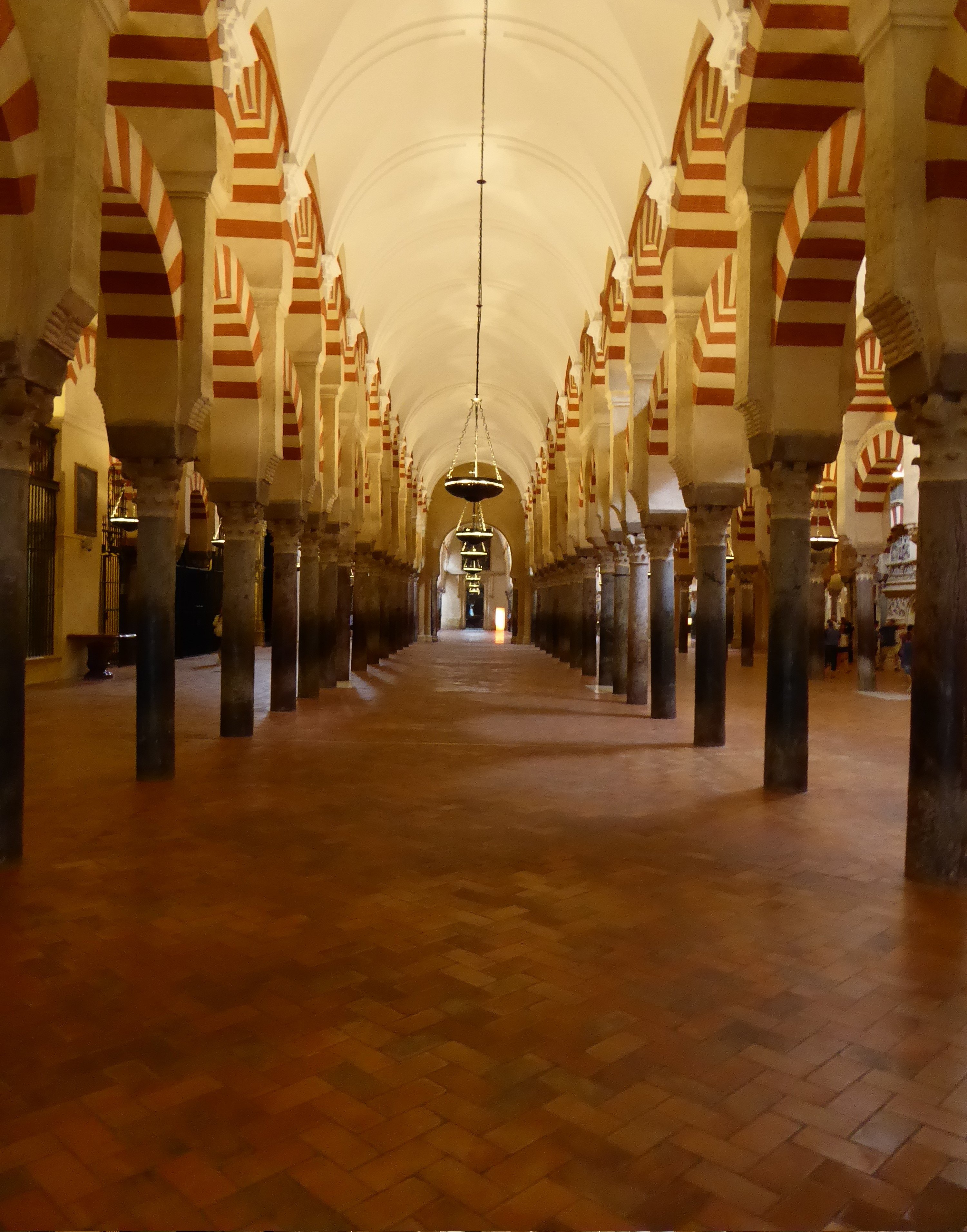

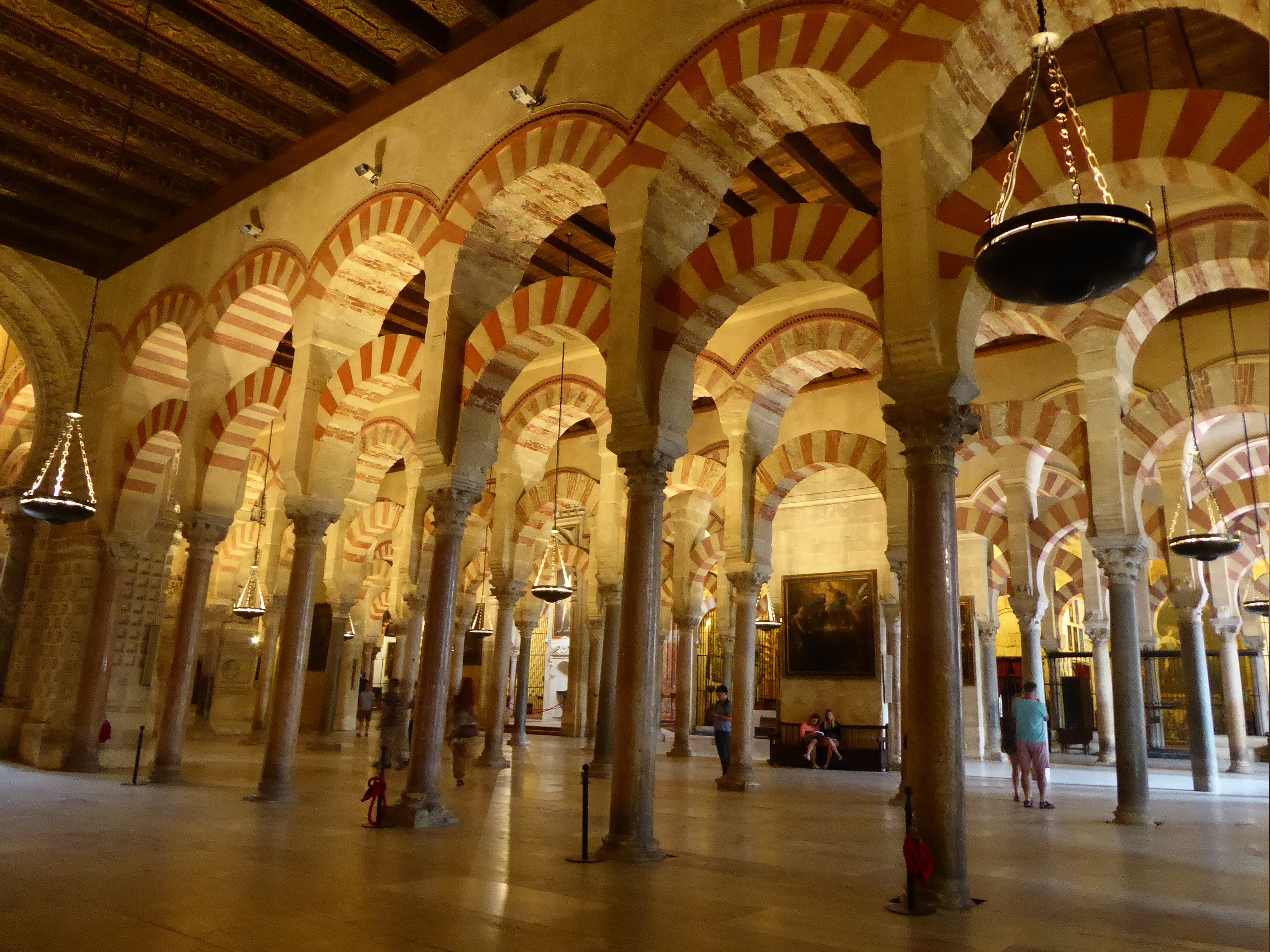
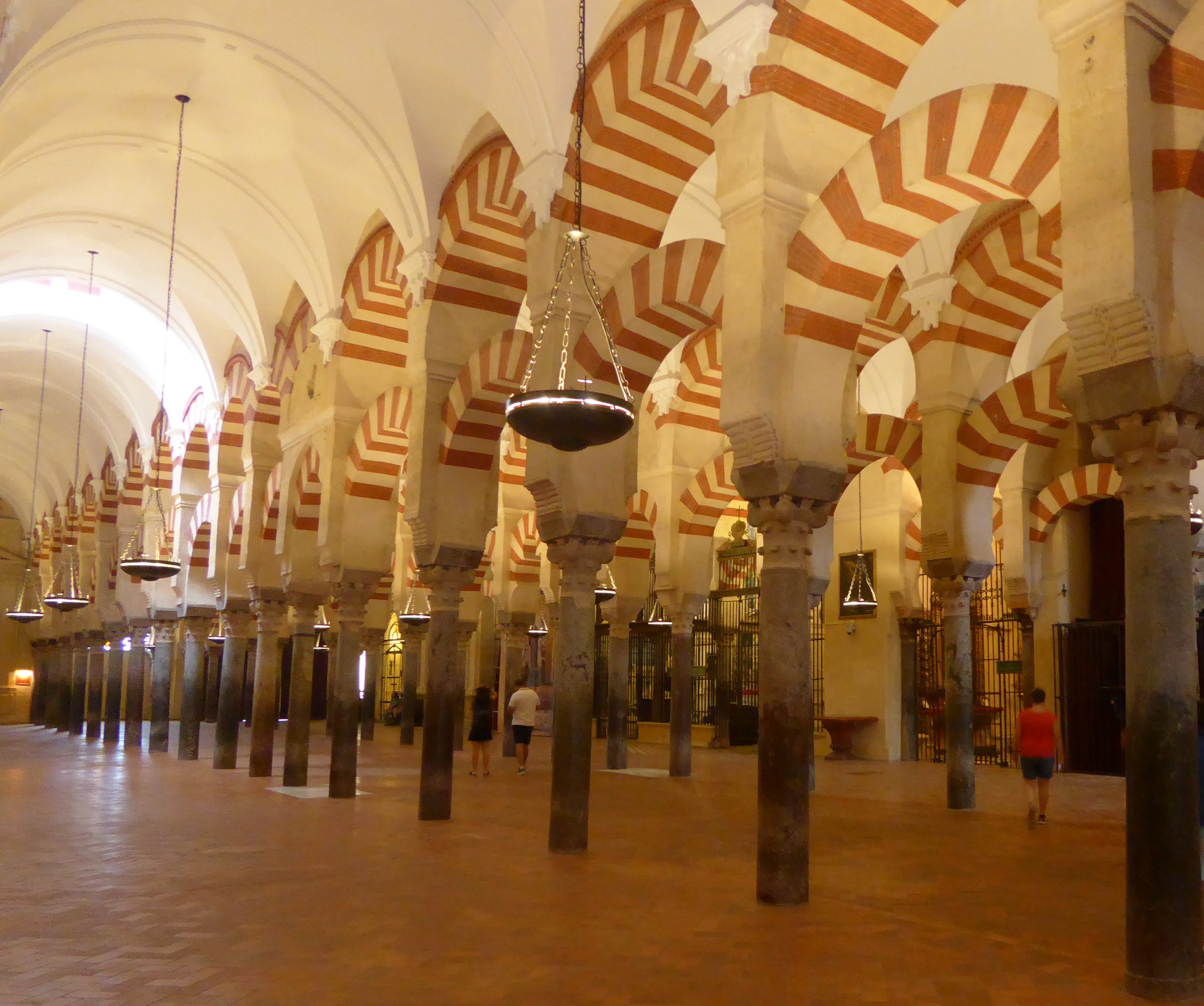
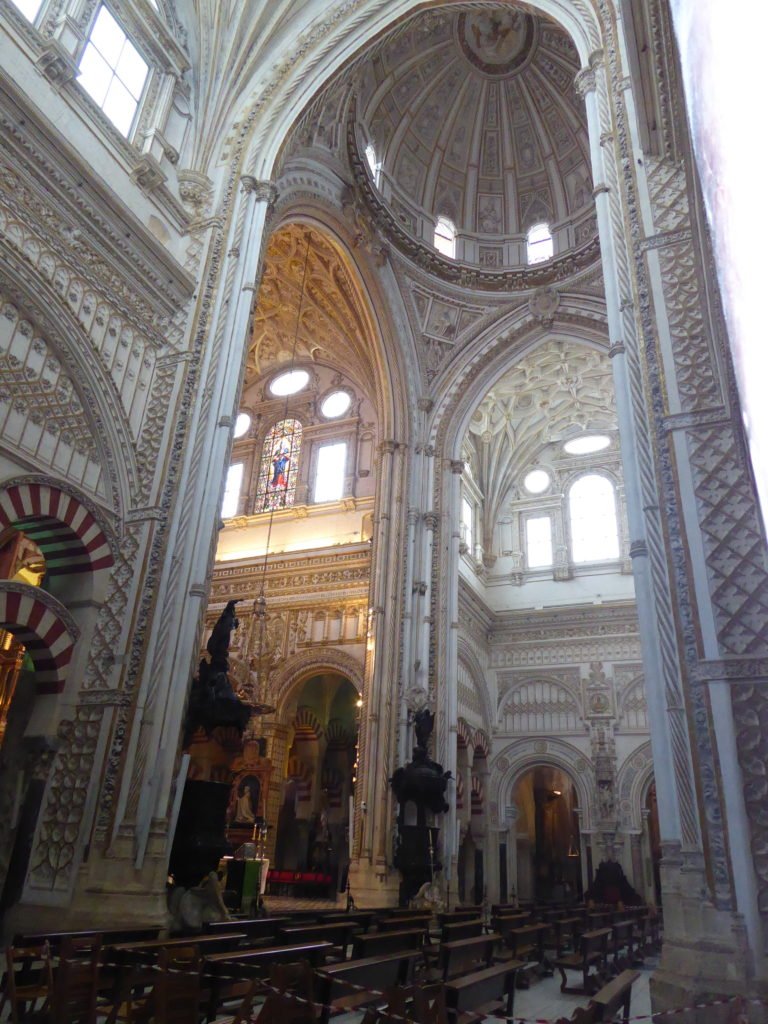
Almost next door to the Mosque/Cathedral is the Alcázar de los Reyes Cristianos/Castle of the Christian Monarchs/Alcázar of Córdoba but first you go past the Puerta del Puente/Gate of the Bridge which I had already done a few times the previous day.
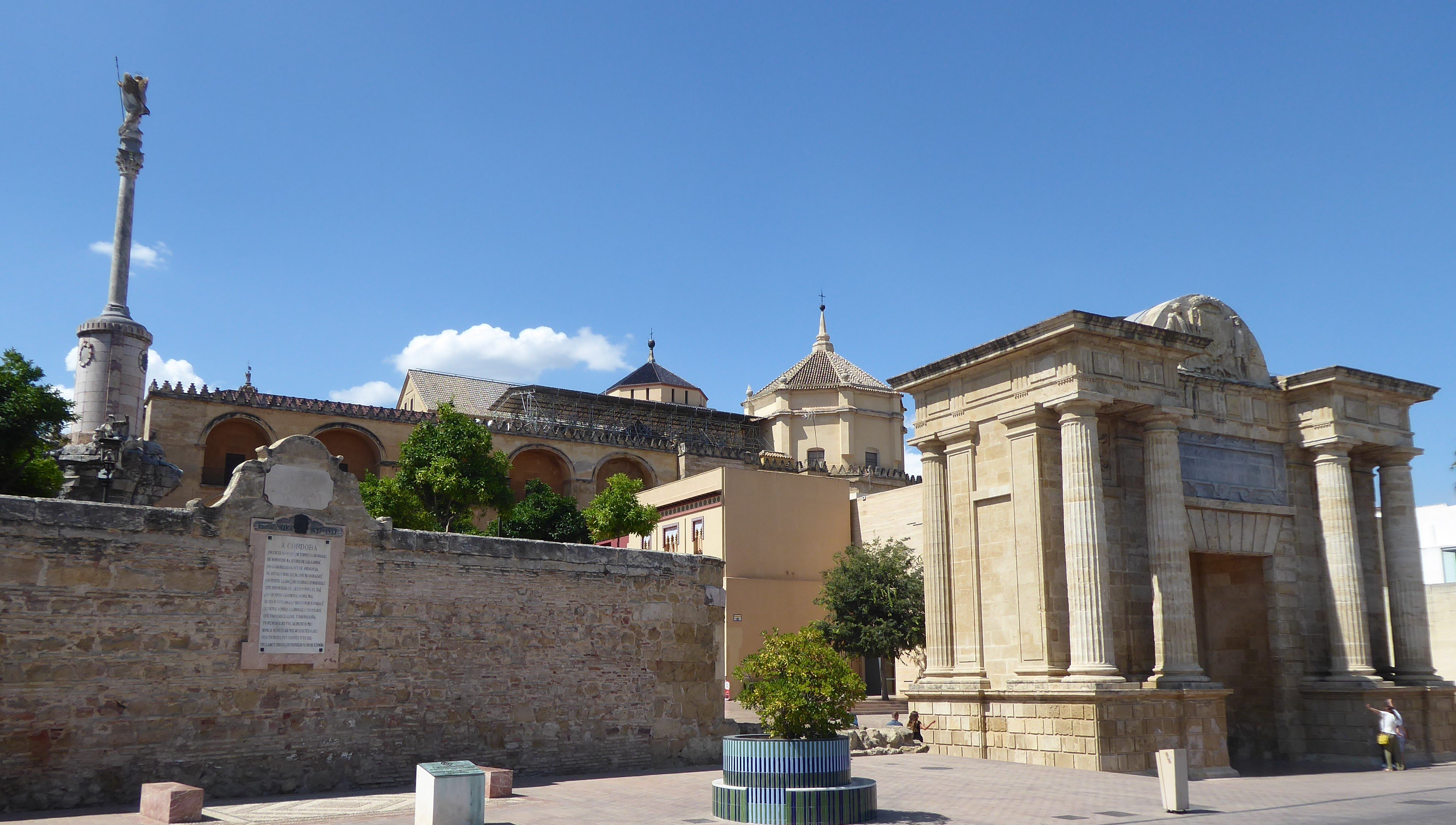
Alcazar of Cordoba
The Alcazar of Cordoba, it dates back to the medieval times as a fortress built by the Visigoths, conquered by the Moors who created an independent Caliphate of Cordoba with the Alcazar as it’s palace. After the Reconquista a lot of the structure was knocked down and rebuilt to what is now seen (only a small amount of the Moorish building remains above ground). The main tower commonly known as the Inquisition Tower – Queen Isabella and her husband Ferdinand used the Alcázar for one of the first permanent tribunals of the Spanish Inquisition. Every time I see or hear “Spanish Inquisition” I cannot help but think of Monty Python – “No one expects the Spanish Inquisition!” still makes me laugh every time I think about it.

Quite a lot of the Alcazar was closed which was disappointing especially the Roman Baths discovered by archaeologists. There is also a large collection of Roman Mosaics in the chapel. The gardens are well worth taking a walk through, with the sun persistently scorching down I was so keen just to jump into one of the pools, the water so clear an inviting, but I didn’t. Still the gardens are quite a contrast to the building and makes a nice change in feel and scenery.




Now since Cordoba played a pivotal role in the Spanish Inquisition I had to visit the little Spanish Inquisition Museum, only €3 and mostly filled with torture instruments, still interesting.
A wonder around the old city walls I couldn’t help noticing that many of the public paths and parks are lined with orange trees, with it being summer they are full of fruit and literally lying all over as they fall. I’m sure they get cleaned up semi regularly!

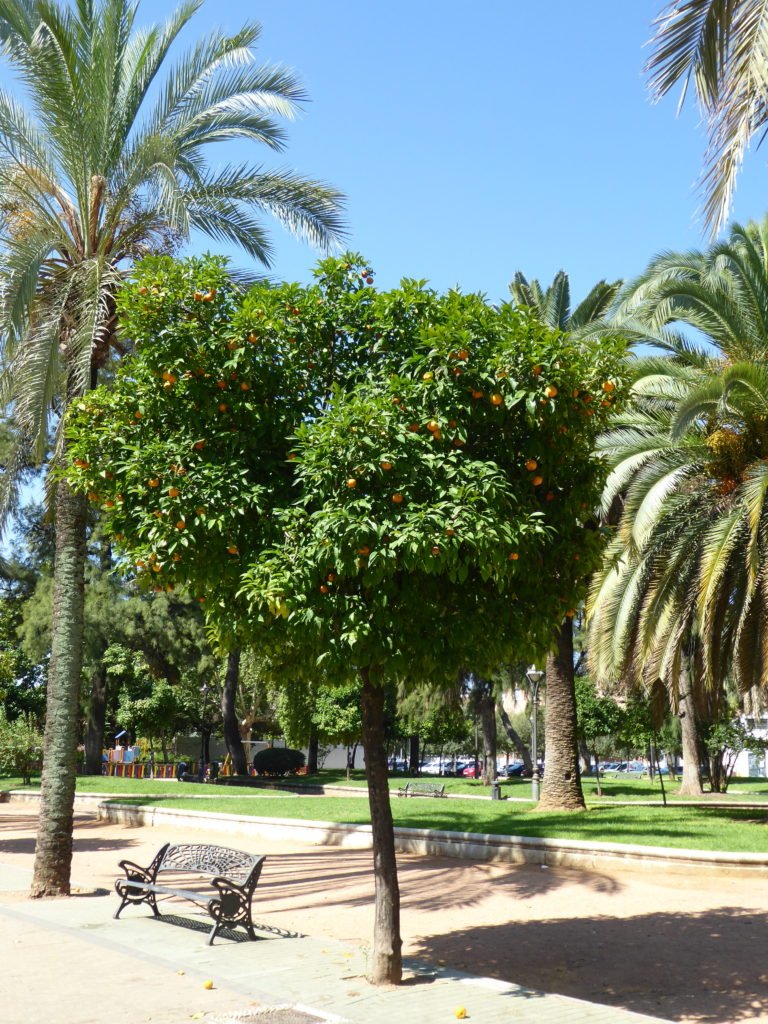
Cordoba still had a lot to offer that I didn’t see, some because I ran out of steam others like the Roman Temple was closed for renovation and restoration. Medina Azahara, the bus there doesn’t operate on Monday’s, that is my biggest regret as I made my plans around seeing it on Monday, well that’s my mistake.
PS. a few other pics that I wanted to include.
